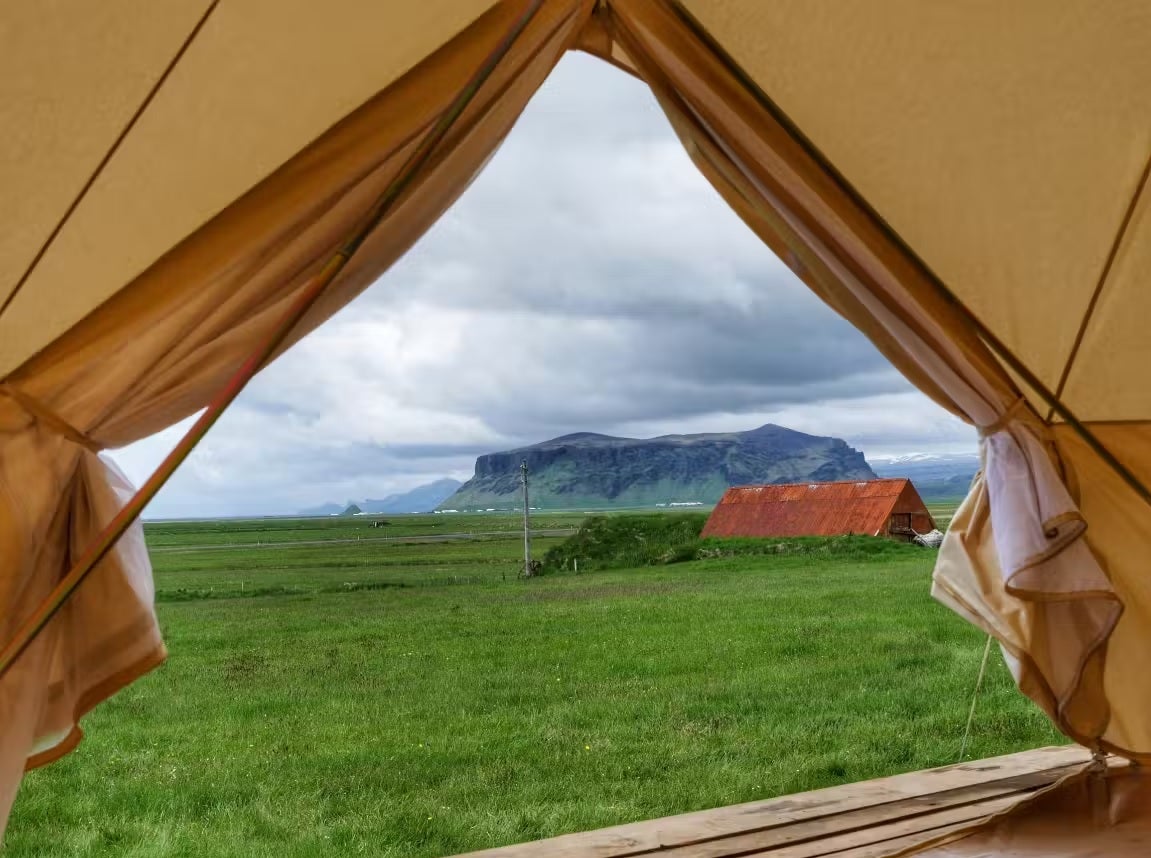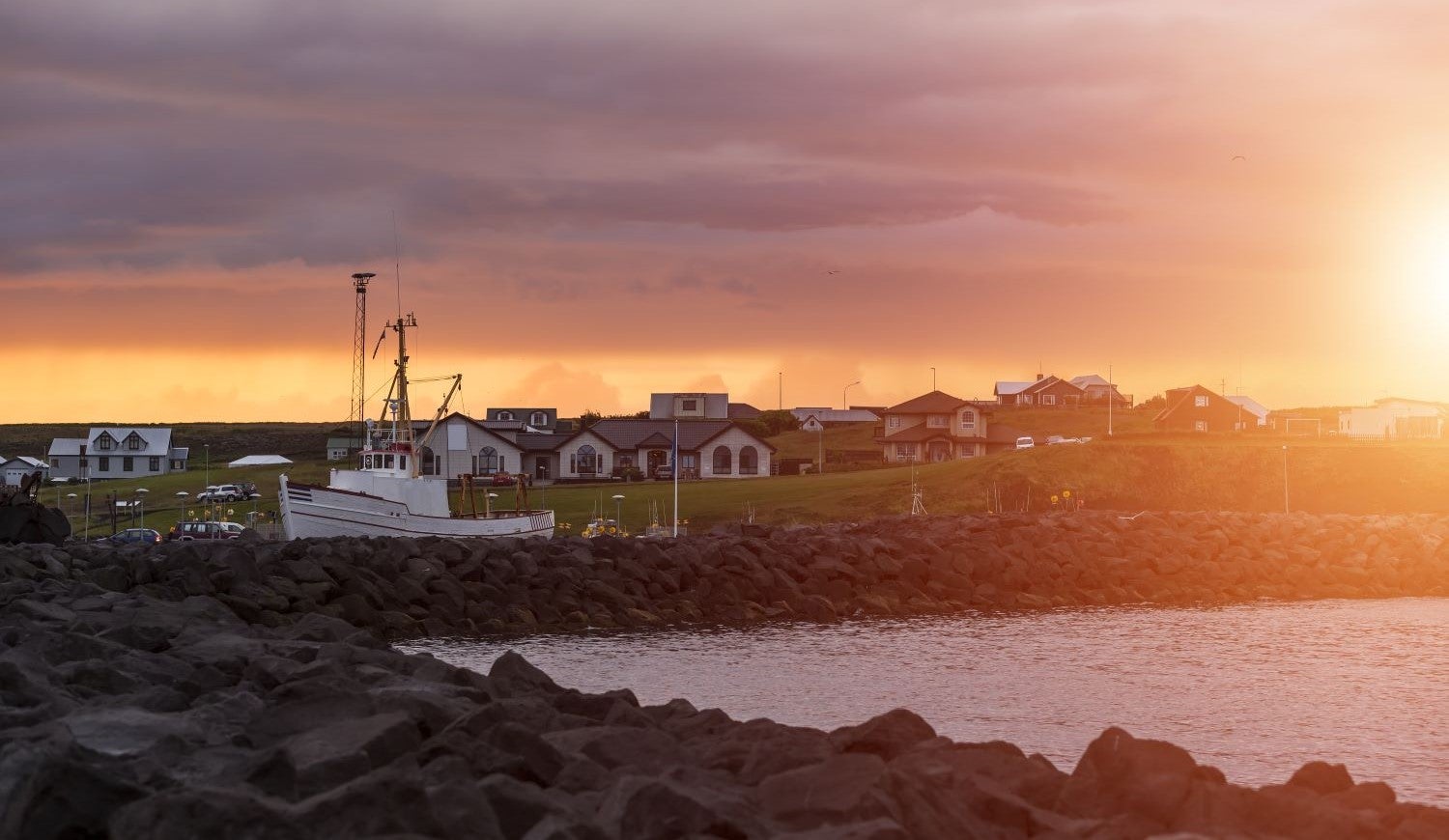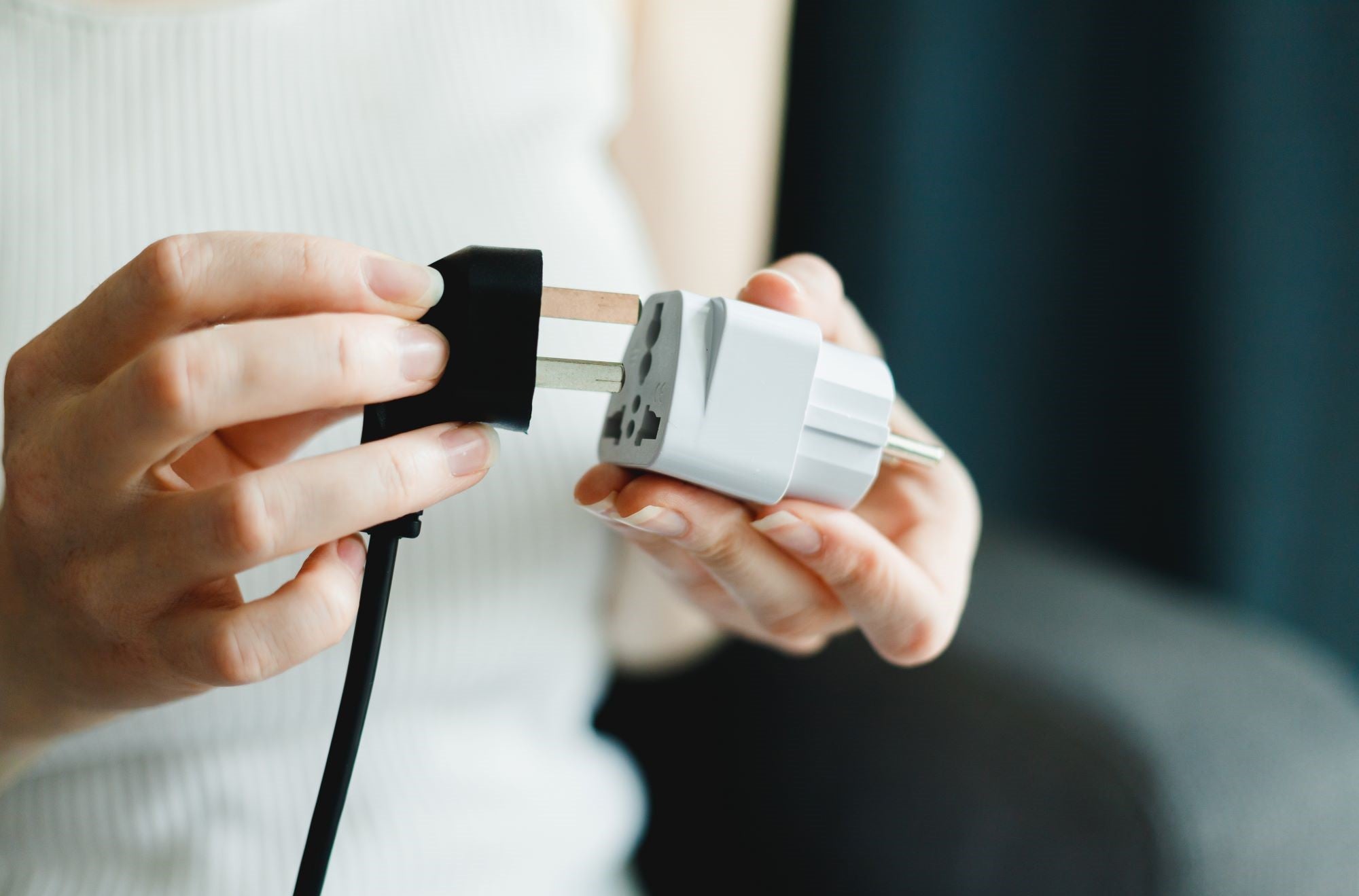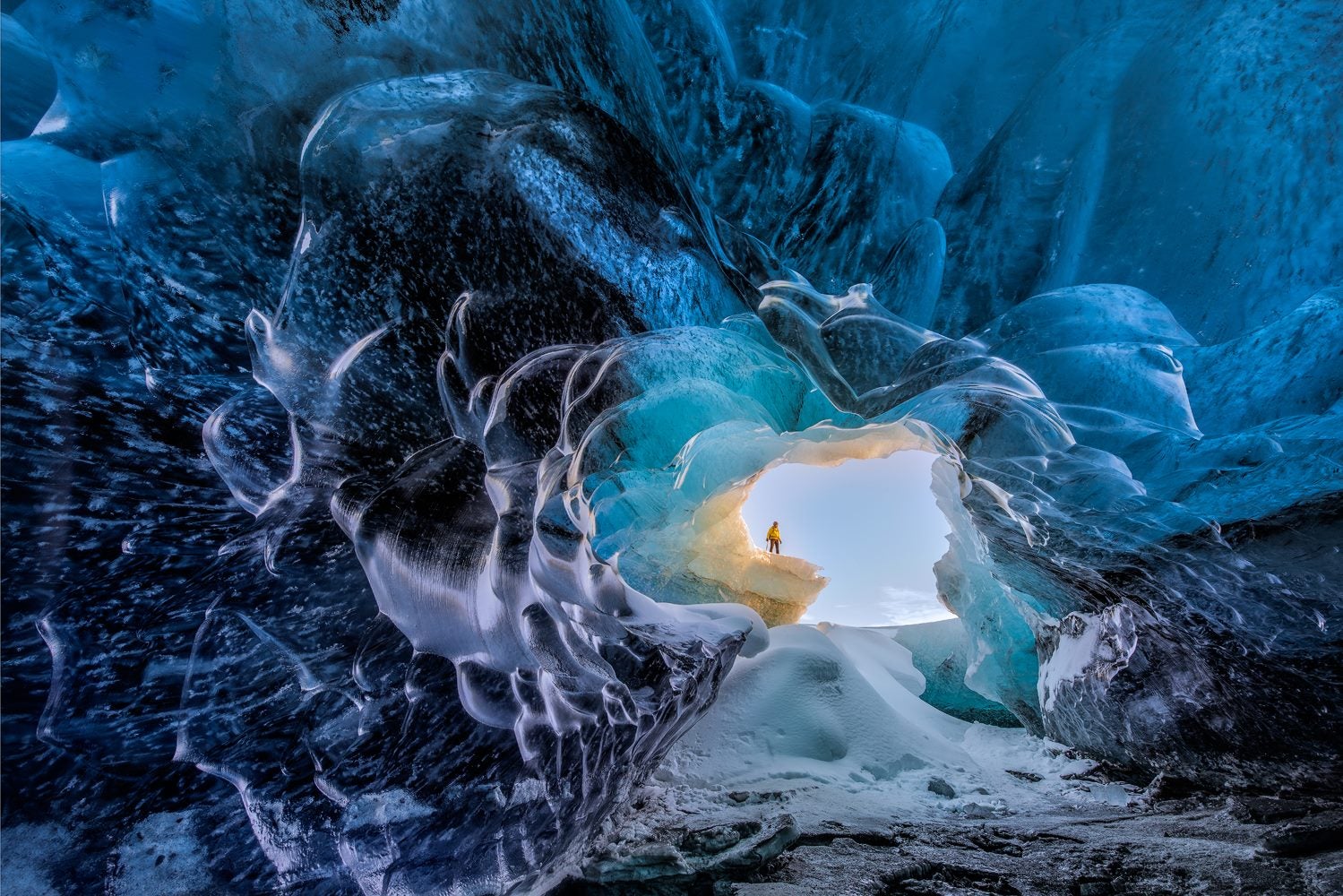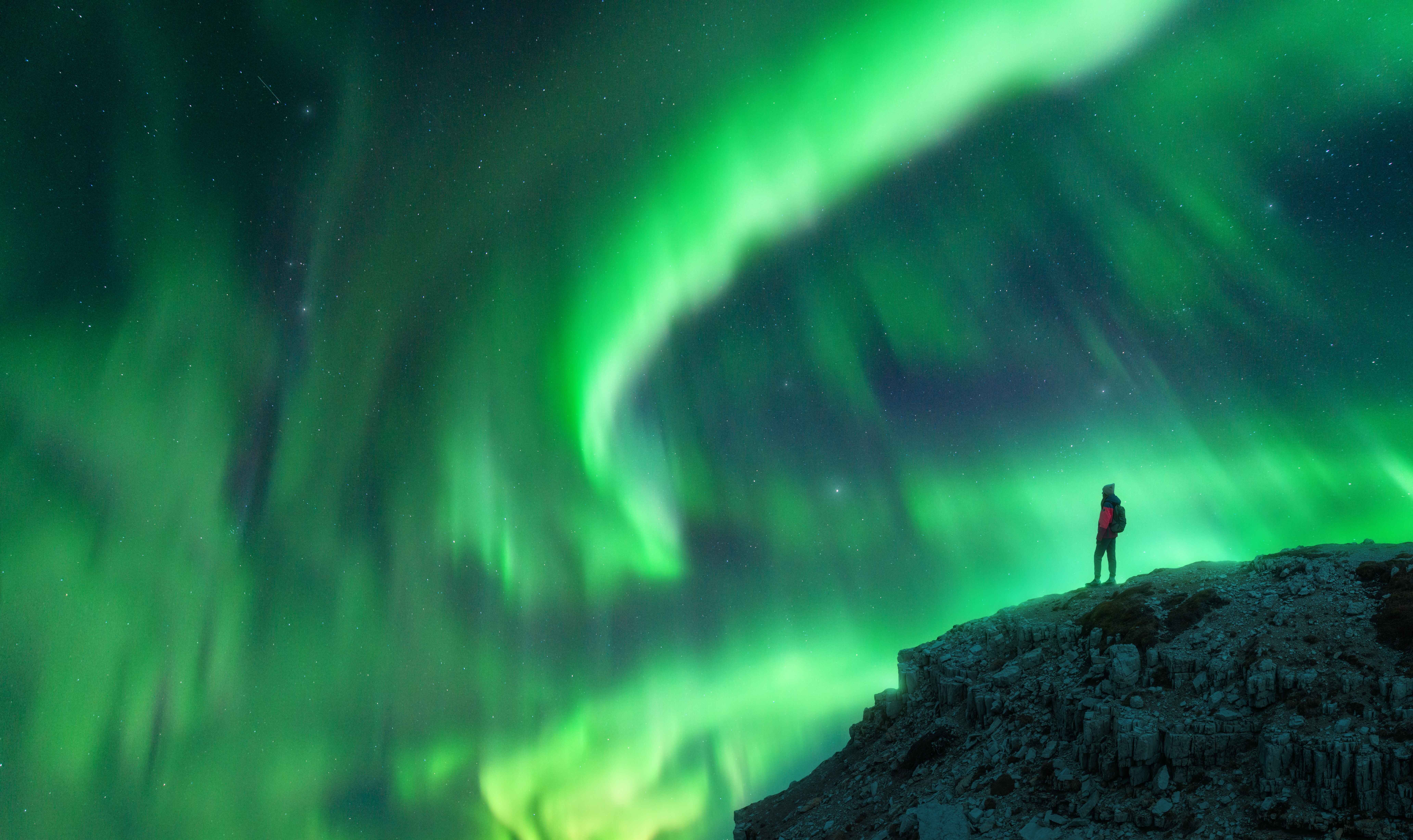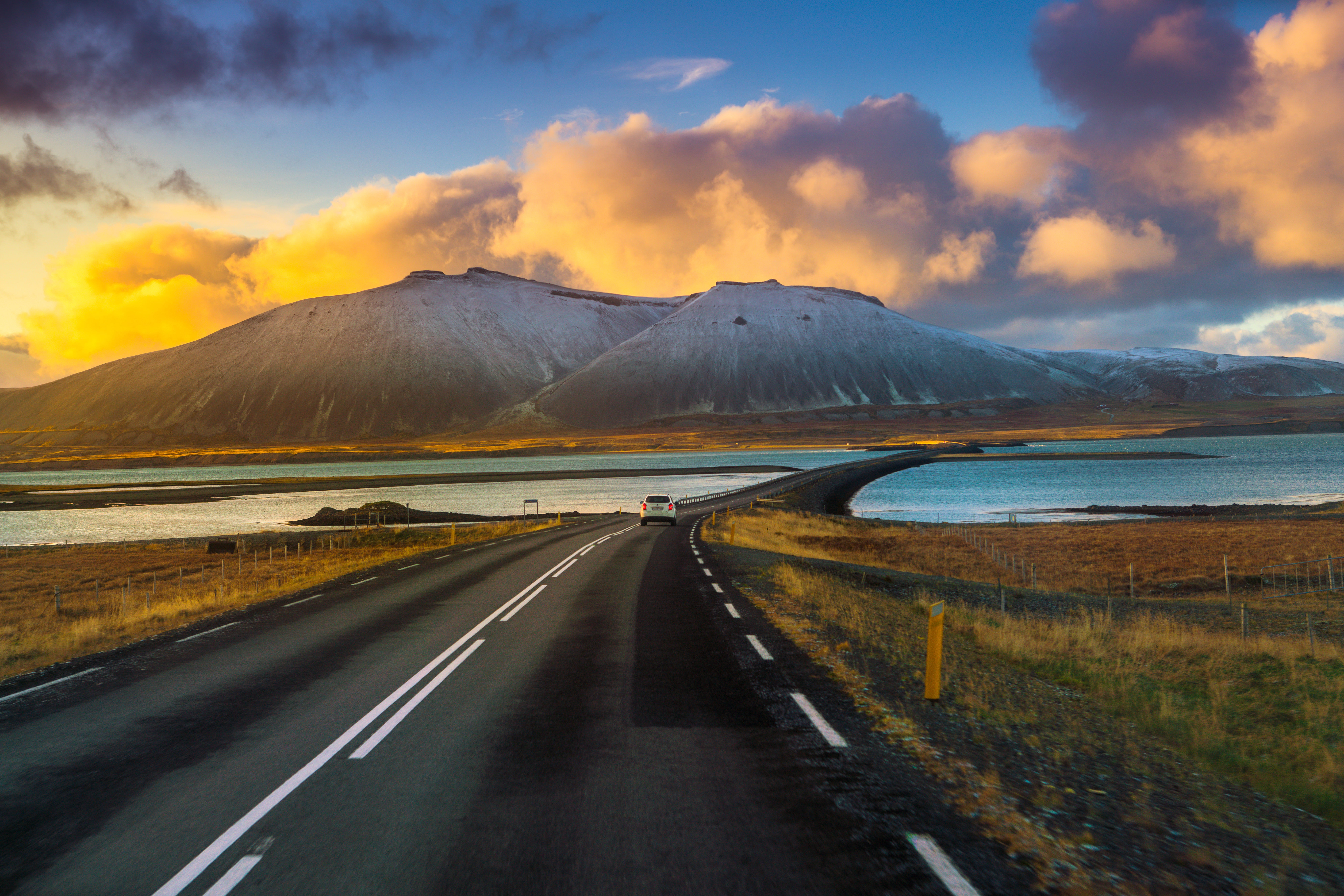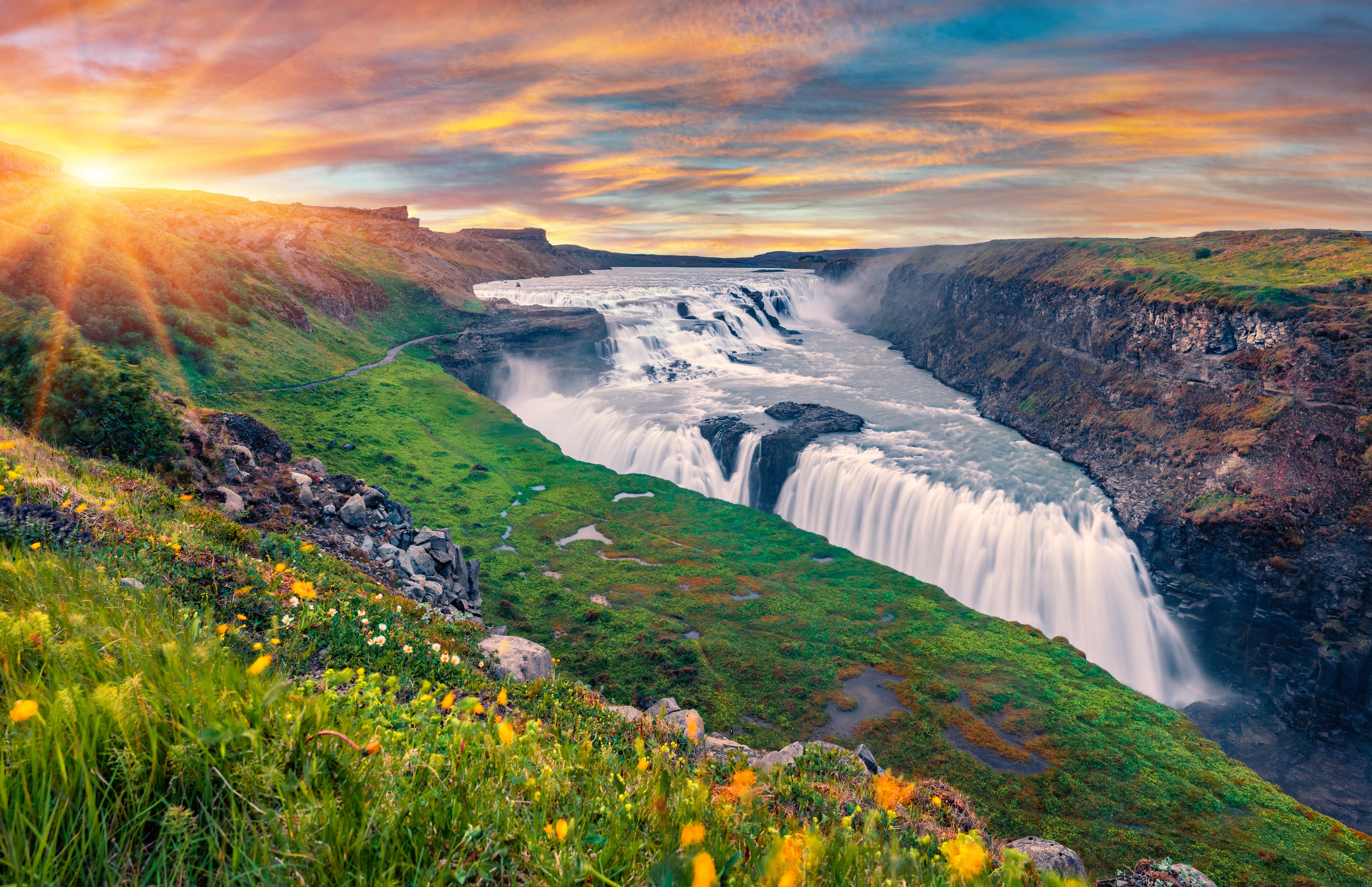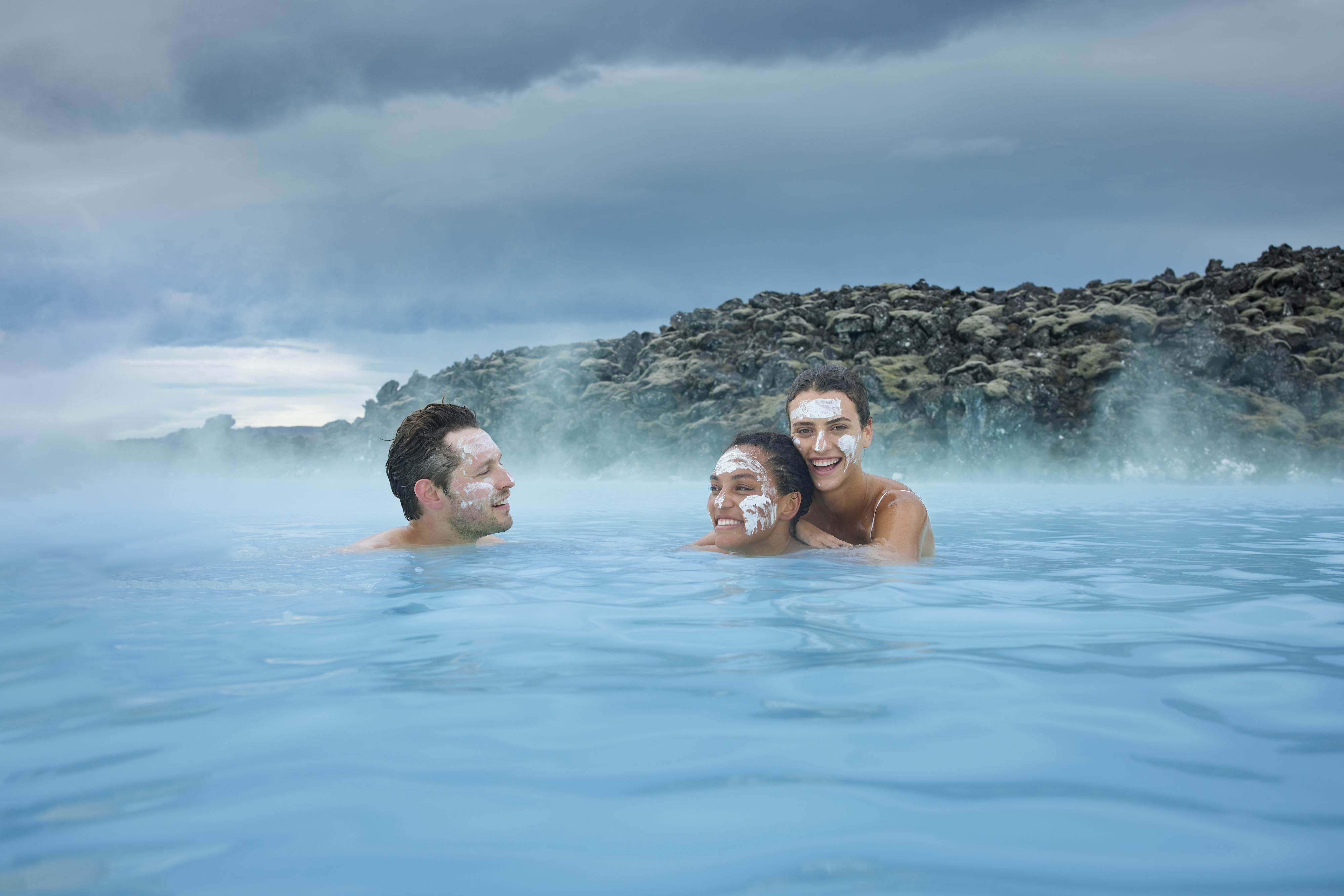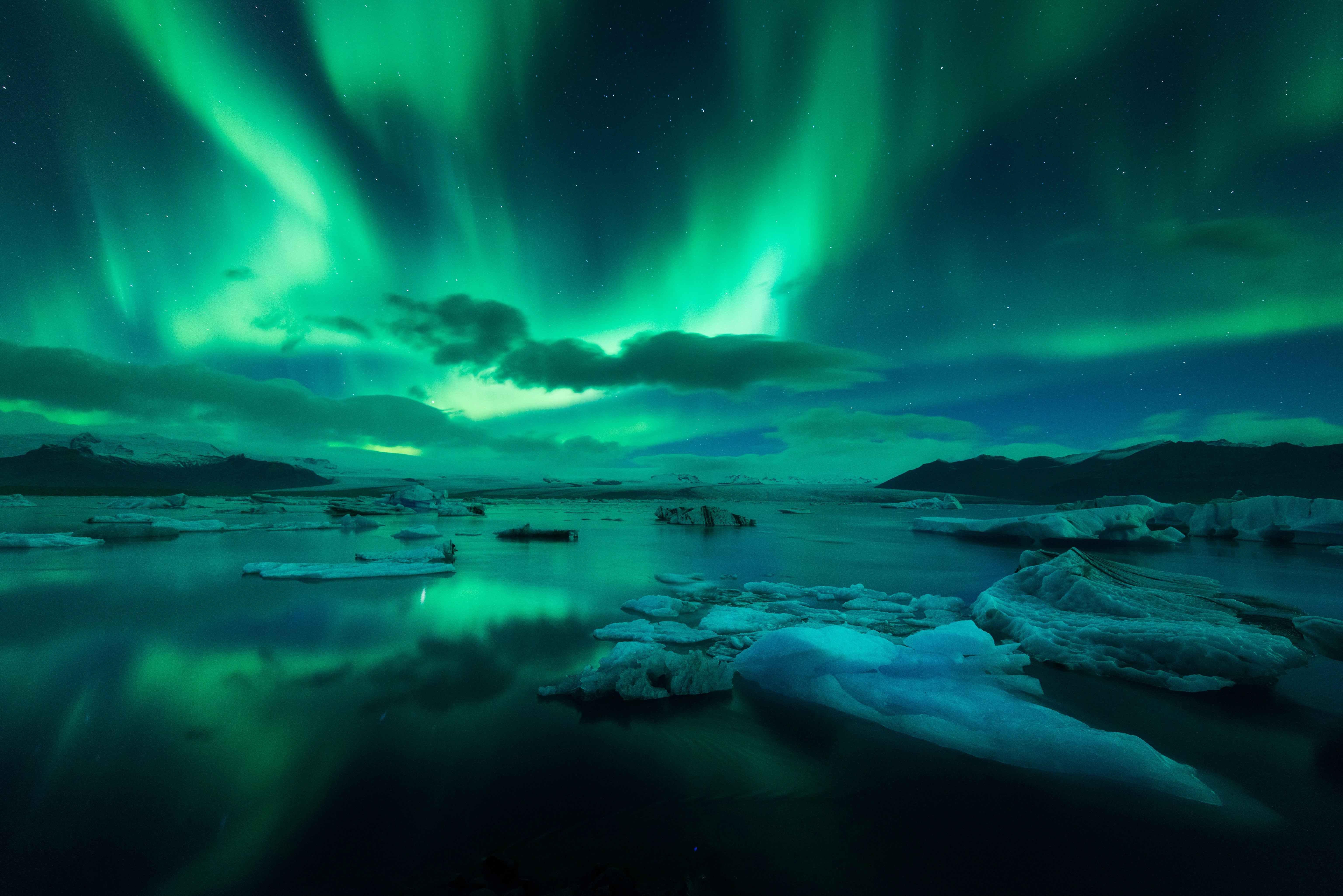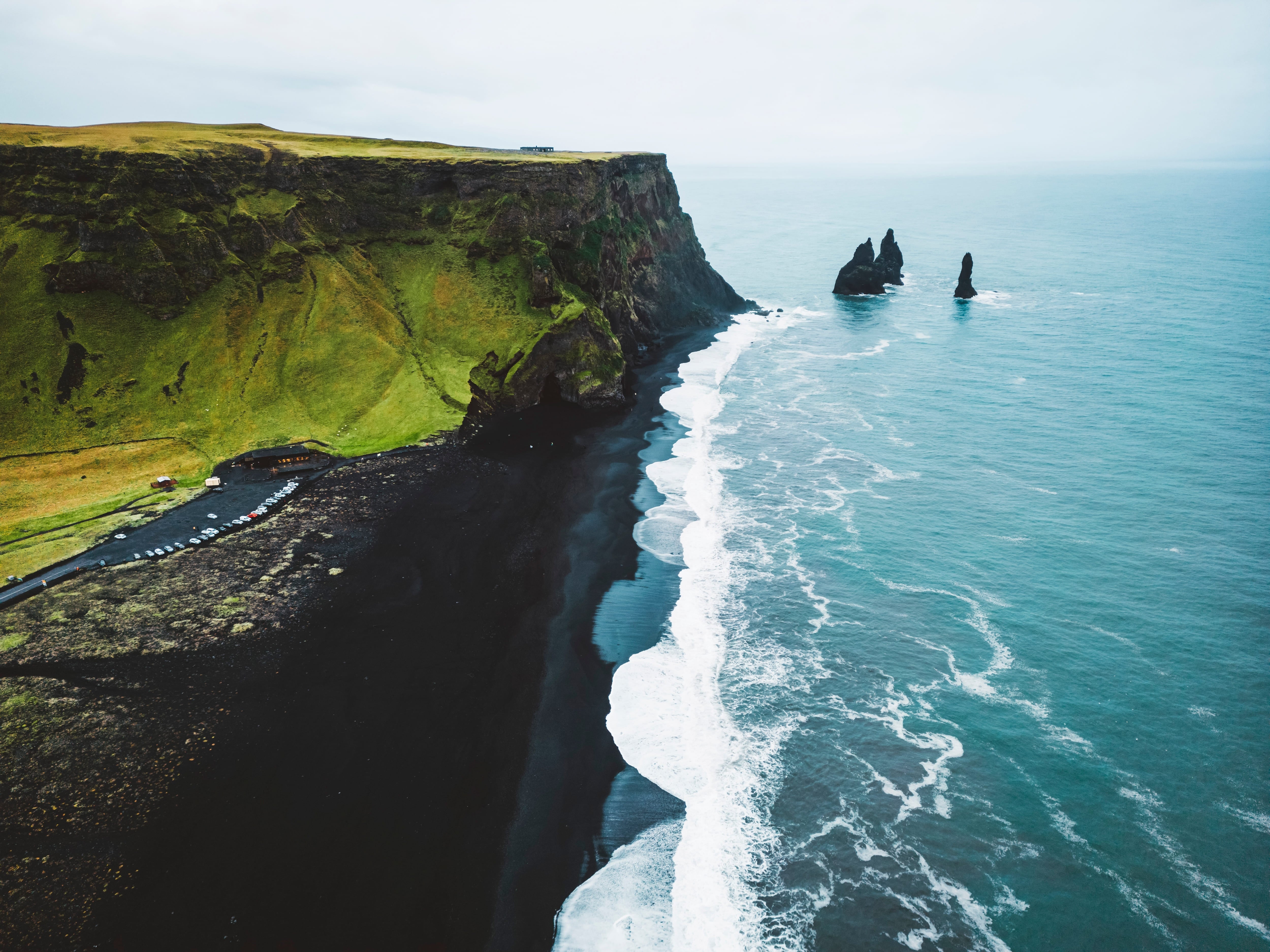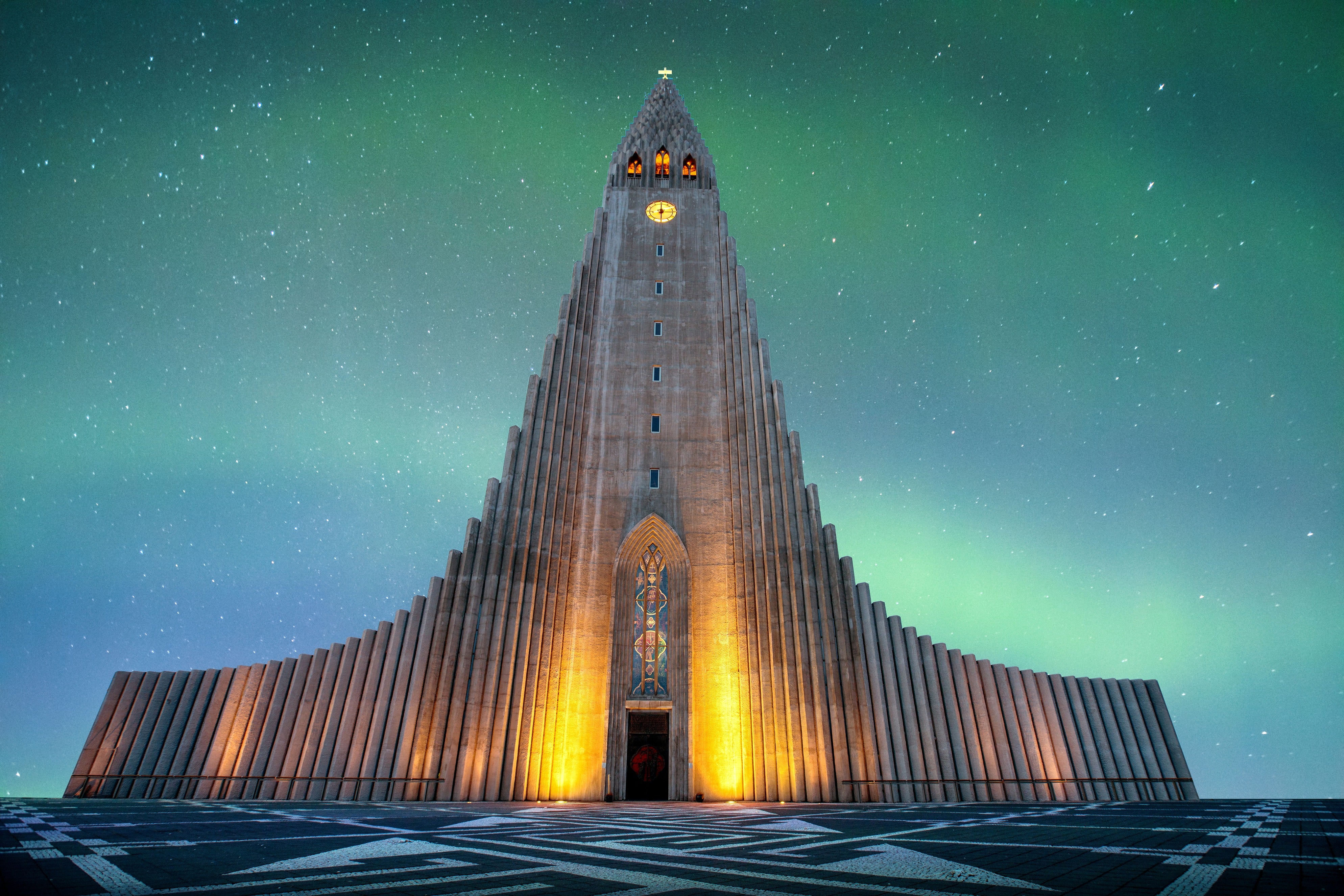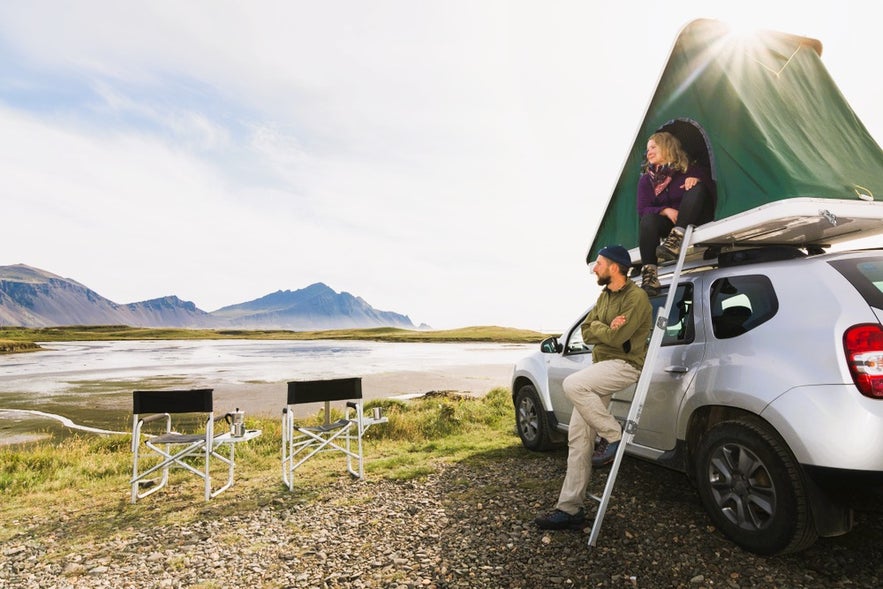
Many visitors choose car rentals to travel at their own pace, stopping at waterfalls, beaches, or viewpoints without relying on a fixed schedule. Conditions in August support a wide range of summer self-drive tours, making it easier to cover long distances and visit both major attractions and less-crowded regions.
A popular option is a one-week self-drive tour of the Ring Road and the Golden Circle, which covers many of Iceland’s most diverse landscapes in a manageable timeframe. Along the way, travelers often add August tours such as puffin watching, whale safaris, or guided Highland hikes to round out the experience.
Why You Can Trust Our Content
Guide to Iceland is the most trusted travel platform in Iceland, helping millions of visitors each year. All our content is written and reviewed by local experts who are deeply familiar with Iceland. You can count on us for accurate, up-to-date, and trustworthy travel advice.
Key Takeaways for Driving in Iceland in August
-
August is one of the best months to drive in Iceland, with long daylight hours, mild weather, and open access to Highland roads.
-
Iceland has four main types of roads: the Ring Road, gravel roads, F-roads, and paved sightseeing routes like the Golden Circle.
-
You need the right type of car for your route. A 2WD works for most paved roads, but a 4x4 is required by law on F-roads.
-
Driving rules are strict and important to follow, including using headlights at all times, sticking to speed limits, and never driving off-road.
-
Be prepared by packing smart. Bring warm layers, rain gear, offline maps, snacks, and a credit card for fuel and car rentals.
- See our Ultimate Guide to Iceland in August
- Check out our Guide to Driving in Iceland
Why Drive in Iceland in August?
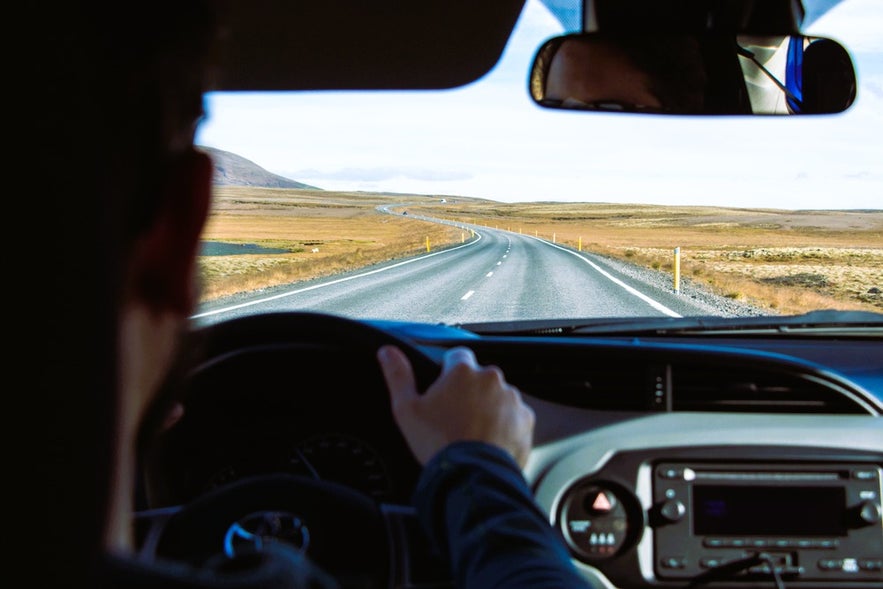 August is one of the best times to explore Iceland by car. If this is your first trip and you want the freedom to stop at waterfalls, black sand beaches, and scenic viewpoints, a self-drive tour is a smart choice. The roads are easier to navigate, the weather is milder, and many beautiful places become accessible.
August is one of the best times to explore Iceland by car. If this is your first trip and you want the freedom to stop at waterfalls, black sand beaches, and scenic viewpoints, a self-drive tour is a smart choice. The roads are easier to navigate, the weather is milder, and many beautiful places become accessible.
Long Daylight Hours for Safe and Flexible Driving
 One major advantage of traveling in August is the extended daylight. In early August, the sun stays up for about 16 to 18 hours. By the end of the month, there are still around 14 hours of light each day. This gives you more time to explore and reduces the stress of driving in the dark.
One major advantage of traveling in August is the extended daylight. In early August, the sun stays up for about 16 to 18 hours. By the end of the month, there are still around 14 hours of light each day. This gives you more time to explore and reduces the stress of driving in the dark.
Mild Weather and Better Road Conditions
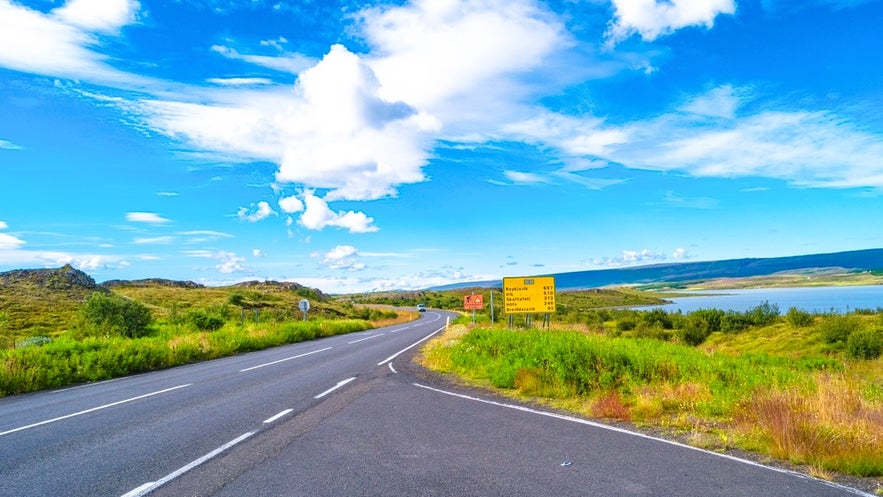 August is one of the warmest months in Iceland, with temperatures ranging from 50 F to 59 F (10 C to 15 C). Snow and ice are rare on the main roads, and although you might experience some rain or wind, most days are calm and safe for driving. The overall road conditions are much more manageable compared to winter.
August is one of the warmest months in Iceland, with temperatures ranging from 50 F to 59 F (10 C to 15 C). Snow and ice are rare on the main roads, and although you might experience some rain or wind, most days are calm and safe for driving. The overall road conditions are much more manageable compared to winter.
- Read more about Iceland's Weather, Climate, and Temperature Year-Round
Access to Highlands and Remote Destinations
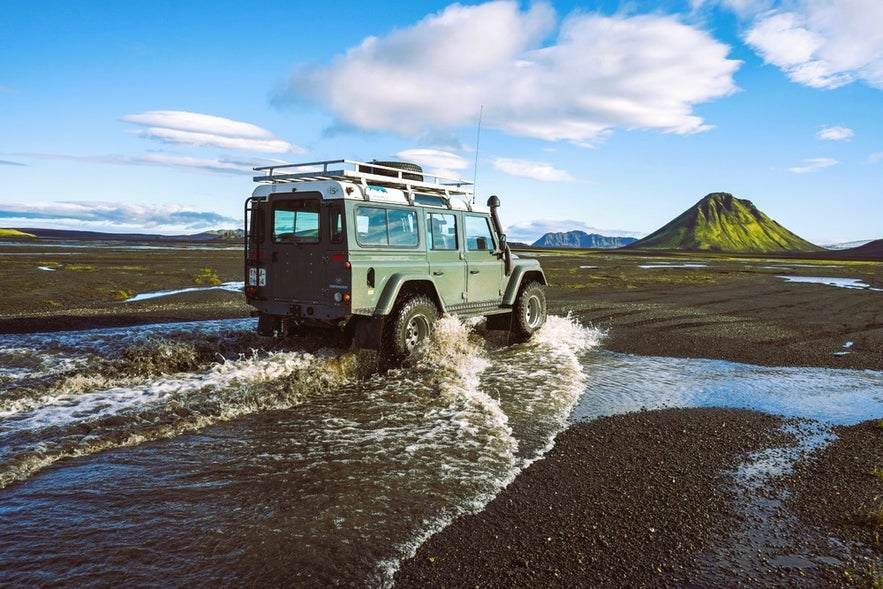 Many roads that are closed in winter reopen in summer, including Iceland’s F-roads. These mountain roads, normally open from late June to early September, lead into the country’s rugged interior and are only accessible by renting four-wheel drive (4x4) vehicles. They take you to incredible places like Landmannalaugar and Askja Caldera, which are known for their raw, untouched landscapes.
Many roads that are closed in winter reopen in summer, including Iceland’s F-roads. These mountain roads, normally open from late June to early September, lead into the country’s rugged interior and are only accessible by renting four-wheel drive (4x4) vehicles. They take you to incredible places like Landmannalaugar and Askja Caldera, which are known for their raw, untouched landscapes.
Always check forecasts at vedur.is and road condition on road.is before setting out to make sure it's safe.
Excellent Wildlife Viewing Opportunities
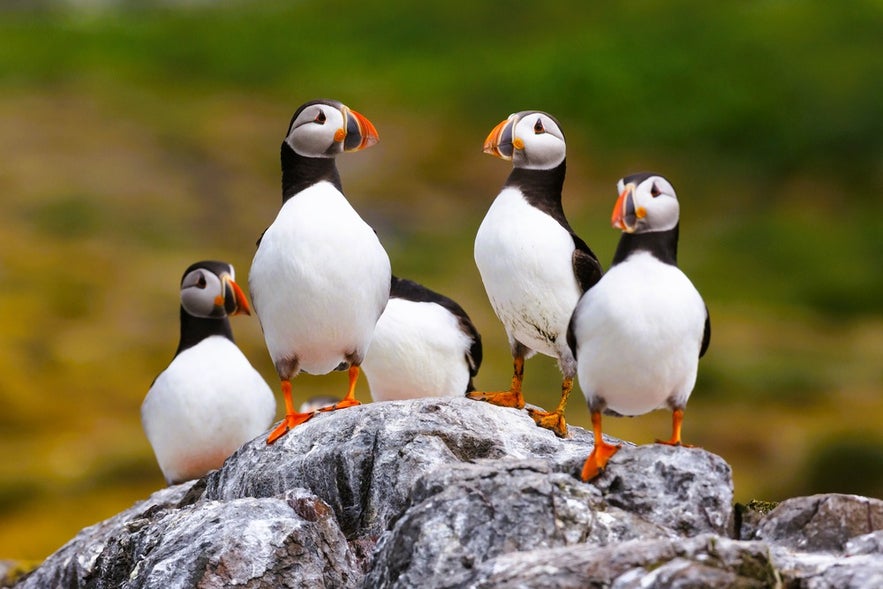 August is the last full month to see puffins before they leave Iceland for the season. These seabirds gather on sea cliffs such as Dyrholaey in the south and Latrabjarg in the Westfjords, where they can be seen nesting and interacting in large colonies.
August is the last full month to see puffins before they leave Iceland for the season. These seabirds gather on sea cliffs such as Dyrholaey in the south and Latrabjarg in the Westfjords, where they can be seen nesting and interacting in large colonies.
This is also a prime time for whale watching, with daily tours running from Husavik, Reykjavik, and other coastal towns. Along your drive, you may also spot seals sunbathing near the shoreline, seabirds flying low over rivers and lakes, or even an Arctic fox in more remote regions.
- Learn more about the Wildlife and Animals in Iceland
- Discover Where To See Puffins in Iceland
- Check out our Ultimate Guide To Seal Watching in Iceland
Local Festivals and Summer Events
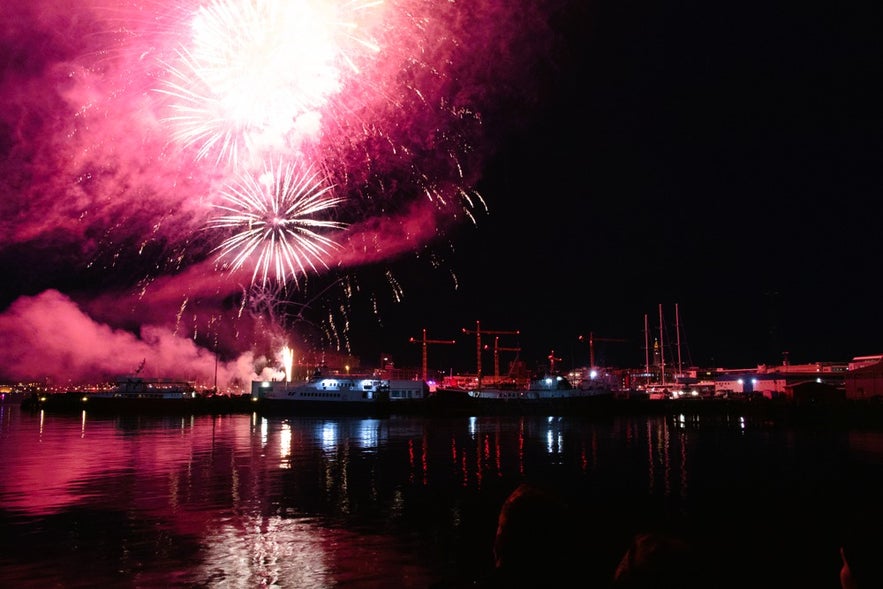 August is not only a great time for driving in Iceland but also one of the most vibrant months for cultural celebrations. As summer begins to wind down, communities across the country come together to enjoy music, art, and local traditions.
August is not only a great time for driving in Iceland but also one of the most vibrant months for cultural celebrations. As summer begins to wind down, communities across the country come together to enjoy music, art, and local traditions.
At the beginning of the month, the Thjodhatid Festival takes place in the Westman Islands. Held during the Merchant’s Holiday weekend, this event brings together thousands of people for concerts, bonfires, fireworks, and camping in a dramatic island setting.
Around the same time, Reykjavik Pride fills the capital with color and celebration. This week-long event features parades, live performances, and community activities that highlight inclusivity and support for the LGBTQ+ community.
Later in the month, Reykjavik Culture Night closes out the season with a city-wide celebration. Usually held on the third or fourth Saturday of August, it includes street art, pop-up exhibitions, concerts, and ends with a fireworks show that lights up the city skyline.
- See also our Iceland in Summer Ultimate Travel Guide
- Learn about the Top Festivals in Iceland
Understanding Iceland’s Roads
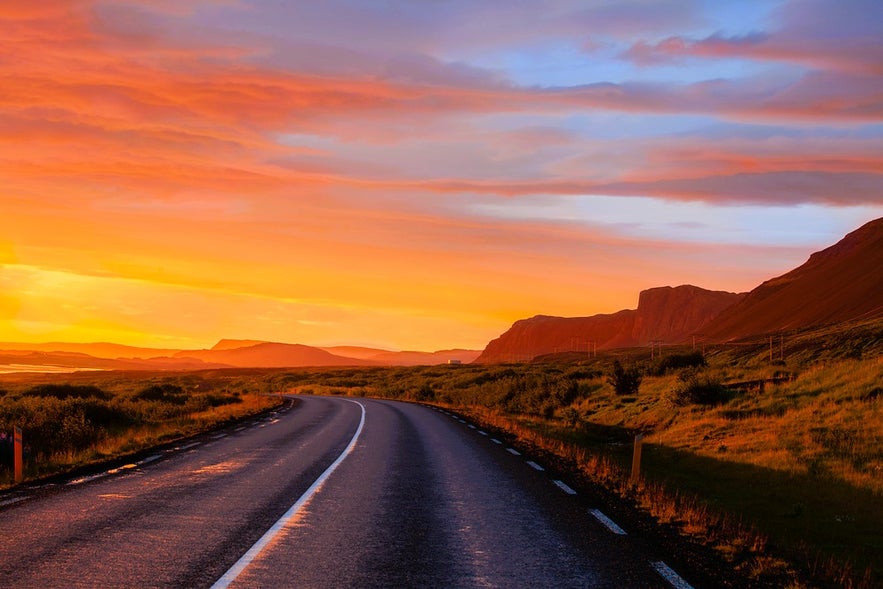 Before starting your road trip in Iceland, it helps to understand the types of roads you will use. Iceland has a small road network that passes through many different landscapes. You may drive through cities like Reykjavik, follow gravel roads near waterfalls and beaches, or explore mountain tracks deep in the Highlands.
Before starting your road trip in Iceland, it helps to understand the types of roads you will use. Iceland has a small road network that passes through many different landscapes. You may drive through cities like Reykjavik, follow gravel roads near waterfalls and beaches, or explore mountain tracks deep in the Highlands.
Knowing the road types and how they connect to sightseeing routes will help you plan safely and travel with more confidence. Iceland's roads vary in surface, difficulty, and seasonal access, which can affect where you go and how you get there. To help you prepare, here are the four main types of roads travelers use in Iceland.
Ring Road (Route 1)
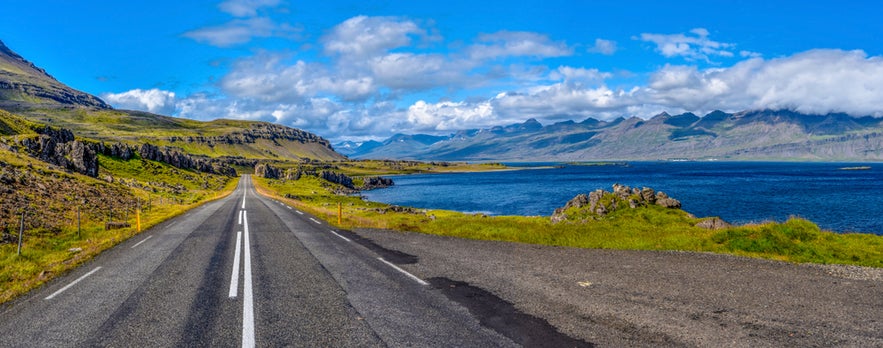 The Ring Road is the main highway that circles Iceland. It connects many towns, villages, and famous natural attractions. The road is fully paved and well-marked, making it ideal for first-time visitors.
The Ring Road is the main highway that circles Iceland. It connects many towns, villages, and famous natural attractions. The road is fully paved and well-marked, making it ideal for first-time visitors.
Important Details About the Ring Road
-
Total length: about 825 miles (1,328 kilometers)
-
Road surface: fully paved
-
Vehicle needed: suitable for two-wheel drive (2WD) cars
-
Speed limit: 55 miles per hour (90 kilometers per hour)
-
Open season: accessible all year
Popular Towns and Areas Directly Along the Ring Road
-
Vik: A South Coast village known for black sand beaches, sea stacks, and dramatic cliffs.
-
Hofn: A small fishing town with views of Vatnajokull Glacier and a reputation for excellent lobster.
-
Egilsstadir: The largest town in East Iceland, surrounded by lakes and forests, and close to the Eastfjords.
-
Akureyri: A vibrant town in North Iceland with gardens, museums, and whale watching opportunities nearby.
- Learn more about the Best Attractions Along the Ring Road
F-Roads (Mountain Roads)
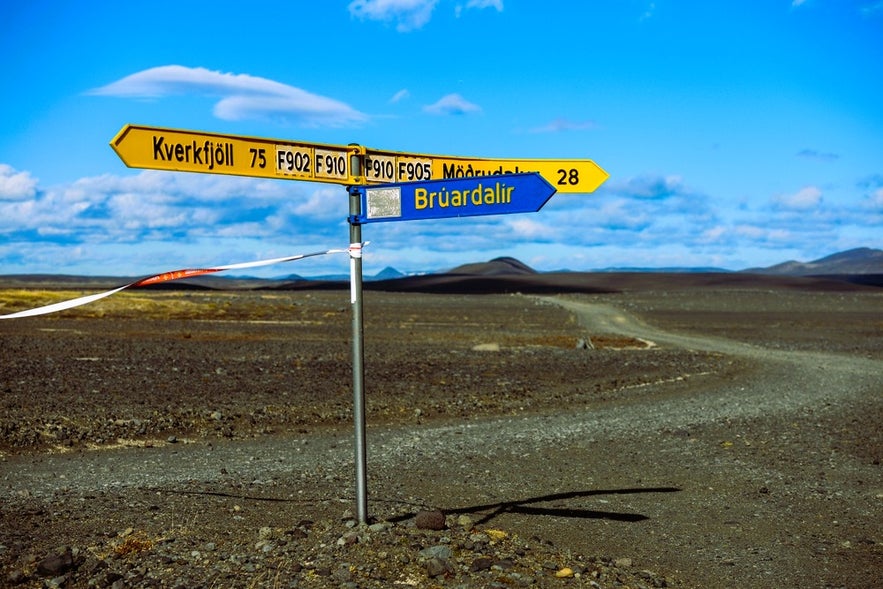 F-roads are rough mountain roads that lead into Iceland’s Central Highlands. These roads are unpaved, narrow, and often include steep hills or river crossings. They are open only in summer and require a 4x4 vehicle. Driving a 2WD car on F-roads is illegal, unsafe, and may void your rental insurance.
F-roads are rough mountain roads that lead into Iceland’s Central Highlands. These roads are unpaved, narrow, and often include steep hills or river crossings. They are open only in summer and require a 4x4 vehicle. Driving a 2WD car on F-roads is illegal, unsafe, and may void your rental insurance.
Important Details About F-Roads
-
Road surface: gravel, uneven, and sometimes steep
-
Vehicle needed: 4x4 required by law
-
Speed limit: 50 miles per hour (80 kilometers per hour), but slower is often necessary
-
Open season: usually July through August
Top Destinations Reached by F-Roads
-
Landmannalaugar: A colorful Highland area with lava fields, hot springs, and hiking trails.
-
Askja: A large volcanic crater lake in a remote desert landscape.
-
Kerlingarfjoll: A geothermal mountain range with steam vents and red slopes.
-
Thorsmork: A lush valley between glaciers with rivers and scenic trails.
- Check out our Ultimate Guide to the Highlands and the Top Places To Visit in the Highlands
Gravel Roads
 Gravel roads are common in Iceland, especially outside the Ring Road. They connect farms, villages, beaches, and less-visited attractions in areas like the Westfjords, Eastfjords, and the Snaefellsnes Peninsula. Conditions vary, and while many roads are smooth, some can be narrow or rough.
Gravel roads are common in Iceland, especially outside the Ring Road. They connect farms, villages, beaches, and less-visited attractions in areas like the Westfjords, Eastfjords, and the Snaefellsnes Peninsula. Conditions vary, and while many roads are smooth, some can be narrow or rough.
Important Details About Gravel Roads
-
Road surface: loose gravel, often with potholes and sharp turns
-
Vehicle needed: 2WD is often enough, but drive slowly and carefully
-
Speed limit: lower than paved roads and not always posted
-
Tip: many rental companies recommend adding gravel protection insurance
Gravel Road Destinations
-
Raudasandur: A peaceful red sand beach in the Westfjords, offering wide open views and a remote coastal experience.
-
Dynjandi: A multi-tiered waterfall in the Westfjords, known for its impressive height and fan-shaped cascade.
-
Latrabjarg: A dramatic bird cliff in the Westfjords, famous for puffin sightings and sweeping ocean views from the edge of the continent.
-
Borgarfjordur Eystri: A quiet village in the Eastfjords surrounded by mountains, cliffs, and puffin nesting areas in summer.
-
Stokksnes: A black sand beach in Southeast Iceland with sweeping views of Vestrahorn Mountain, known for dramatic scenery and photography.
-
Hafragilsfoss: A canyon waterfall in North Iceland, located just downstream from Dettifoss Waterfall and accessed via a rough gravel road.
-
Modrudalur Valley: A Highland farm settlement in Northeast Iceland with turf-roofed houses, hiking trails, and views of Mount Herdubreid.
Paved Sightseeing Routes
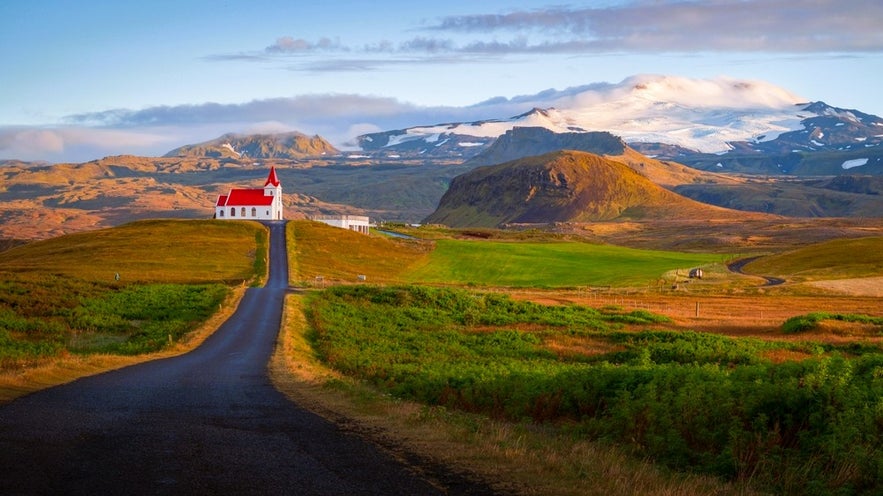 Some of Iceland’s most famous sightseeing routes are paved loops made up of regional highways. These routes are not part of the Ring Road and are not F-roads. They are fully or mostly paved, suitable for 2WD cars, and perfect for self-drive day trips.
Some of Iceland’s most famous sightseeing routes are paved loops made up of regional highways. These routes are not part of the Ring Road and are not F-roads. They are fully or mostly paved, suitable for 2WD cars, and perfect for self-drive day trips.
Golden Circle (South Iceland)
This loop uses Routes 35, 36, and 37, which are fully paved and accessible year-round for all vehicle types. The highlights of the Golden Circle include:
-
Thingvellir National Park: A rift valley where the North American and Eurasian tectonic plates meet.
-
Geysir: The original geyser that gave its name to all others.
-
Gullfoss: A powerful, multi-level waterfall plunging into a canyon.
- Check out our Ultimate Guide to the Golden Circle
- Learn more about How To Drive the Golden Circle and the Best Golden Circle Hotels
Snaefellsnes Peninsula (West Iceland)
This loop follows Routes 54 and 56, which are mostly paved with a few short gravel stretches manageable by most 2WD vehicles. The highlights include:
-
Kirkjufell: A cone-shaped mountain often photographed with a nearby waterfall.
-
Snaefellsjokull National Park: A glacier-capped volcano surrounded by lava fields and beaches.
-
Arnarstapi: A small fishing village with dramatic coastal cliffs and rock formations.
-
Djupalonssandur: A black pebble beach with remnants of a shipwreck and sea views.
- Discover the Top Things To Do in Snaefellsnes and the Best Snaefellsnes Cafes
Diamond Circle (North Iceland)
The Diamond Circle follows Routes 85 and 862, both paved and accessible in summer, with Route 864 as an optional gravel segment. Most of the route is drivable with a 2WD car during the summer months. Highlights include:
-
Godafoss: A wide, horseshoe-shaped waterfall known as the “Waterfall of the Gods.”
-
Lake Myvatn: A shallow lake surrounded by volcanic craters and geothermal features.
-
Dettifoss: Europe’s most powerful waterfall, located in a dramatic canyon.
-
Asbyrgi: A forested, horseshoe-shaped canyon with walking trails.
-
Husavik: A seaside town famous for whale watching tours.
- Check out our Ultimate Guide to the Diamond Circle
Lake Myvatn Loop (Lava Circle)
This loop runs along Route 848 and nearby paved roads, forming a short and smooth route ideal for sightseeing around the lake. The highlights include:
-
Krafla: A volcanic zone with lava fields and crater lakes.
-
Dimmuborgir: A field of twisted lava pillars and caves.
-
Grjotagja: A lava cave with a naturally heated thermal spring inside.
- Check out our Ultimate Guide to Lake Myvatn
Choosing the Right Rental Vehicle in Iceland
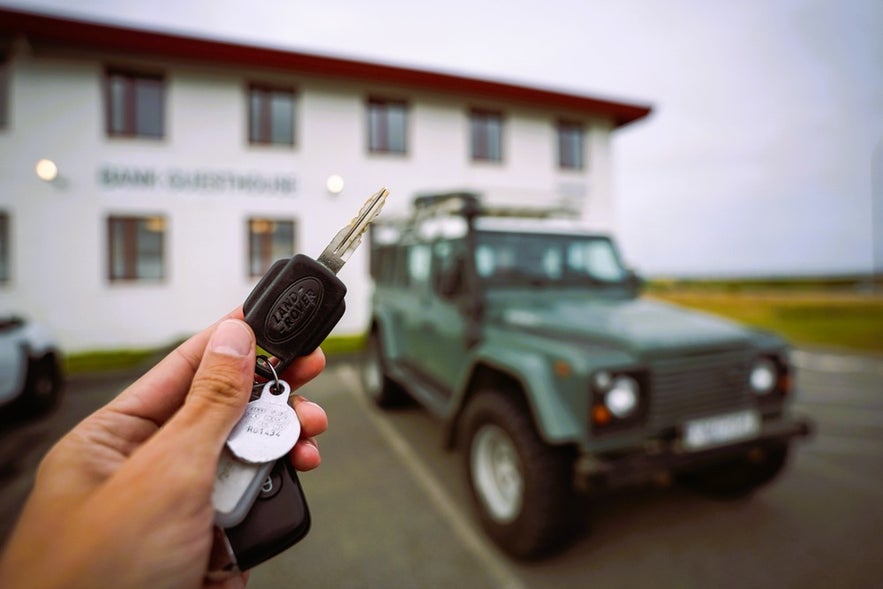 Driving in Iceland is one of the best ways to explore the country, but choosing the right rental vehicle is important for a safe and smooth trip. If you're visiting for the first time, this will help you understand the basics clearly.
Driving in Iceland is one of the best ways to explore the country, but choosing the right rental vehicle is important for a safe and smooth trip. If you're visiting for the first time, this will help you understand the basics clearly.
2WD vs 4x4: What's the Difference?
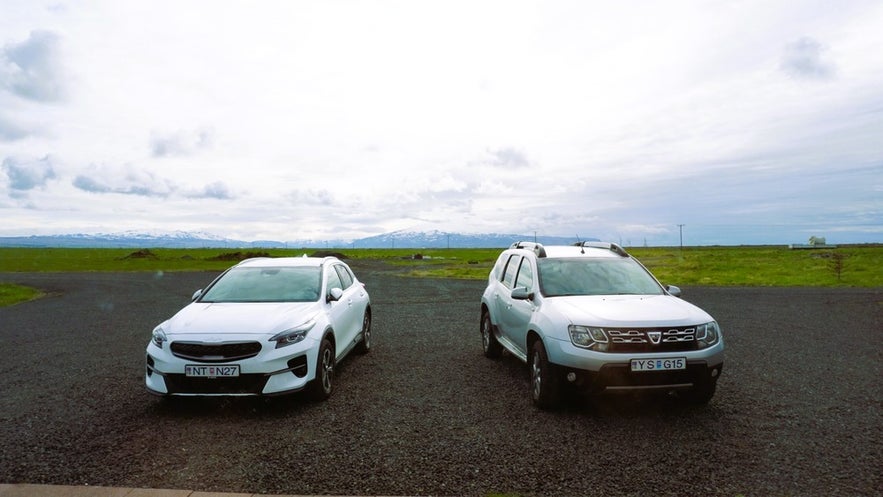 Not all roads in Iceland are the same. Some are easy highways, while others are steep, narrow, or unpaved. Rental vehicles come in two main types: two-wheel drive (2WD) and four-wheel drive (4x4).
Not all roads in Iceland are the same. Some are easy highways, while others are steep, narrow, or unpaved. Rental vehicles come in two main types: two-wheel drive (2WD) and four-wheel drive (4x4).
A 2WD car is best for city driving and for popular routes like the Ring Road and Golden Circle. These cars are less expensive to rent and offer better fuel efficiency. If you're sticking to the main roads and visiting places like Reykjavik, Vik, Gullfoss, or Lake Myvatn in summer, a 2WD is usually enough.
Meanwhile, a 4x4 vehicle is required for F-roads and other rough mountain routes, especially in the Central Highlands. These roads are unpaved, steep, and sometimes involve river crossings.
By law, you must use a 4x4 vehicle on F-roads. Driving a 2WD car on these roads is illegal and may cancel your rental insurance. Even outside the Highlands, a 4x4 offers more control in bad weather and on gravel roads.
Best Vehicle Features for Driving in Iceland in Summer
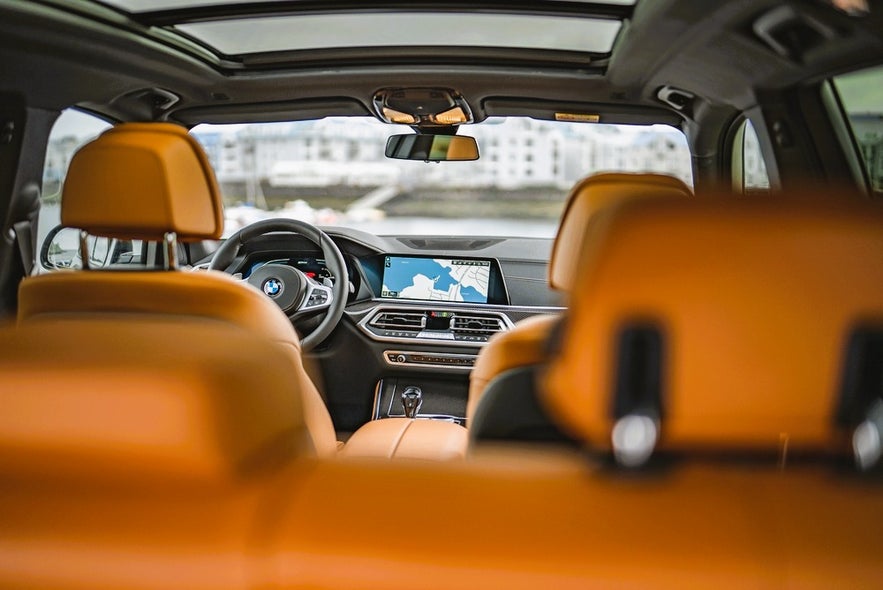 When planning a road trip in Iceland during August, it’s important to choose a rental car that matches both the road conditions and your travel needs. The right features can make your journey safer, smoother, and more enjoyable.
When planning a road trip in Iceland during August, it’s important to choose a rental car that matches both the road conditions and your travel needs. The right features can make your journey safer, smoother, and more enjoyable.
To help you pick the best vehicle for your trip, here are the key features to check before booking:
-
Ground clearance and tire type: If you plan to drive outside major towns, especially in the Westfjords or East Iceland, choose a car with good clearance and gravel-capable tires. Roads in these areas can be rough, and standard cars may not handle them well.
-
Fuel type and driving range: Ask whether the car runs on petrol or diesel, and find out how far it can travel on a full tank. In rural areas, gas stations may be far apart, so it's important to plan ahead and avoid running low.
-
GPS or offline navigation: Check if the car includes built-in GPS or if you can use your phone for navigation. Mobile signal is limited in some areas, so be sure to download offline maps before your trip.
-
Emergency safety gear: Make sure the car comes with a reflective vest, a warning triangle, and a tire repair kit or spare tire. These are required by law or strongly recommended, especially when driving in remote regions.
-
Passenger and luggage space: Choose a vehicle that fits your group and your gear comfortably. Even in summer, you’ll need warm clothes, waterproof layers, and possibly hiking or swimming items. Small cars can feel cramped on long drives.
Check the Car Insurance and Policy
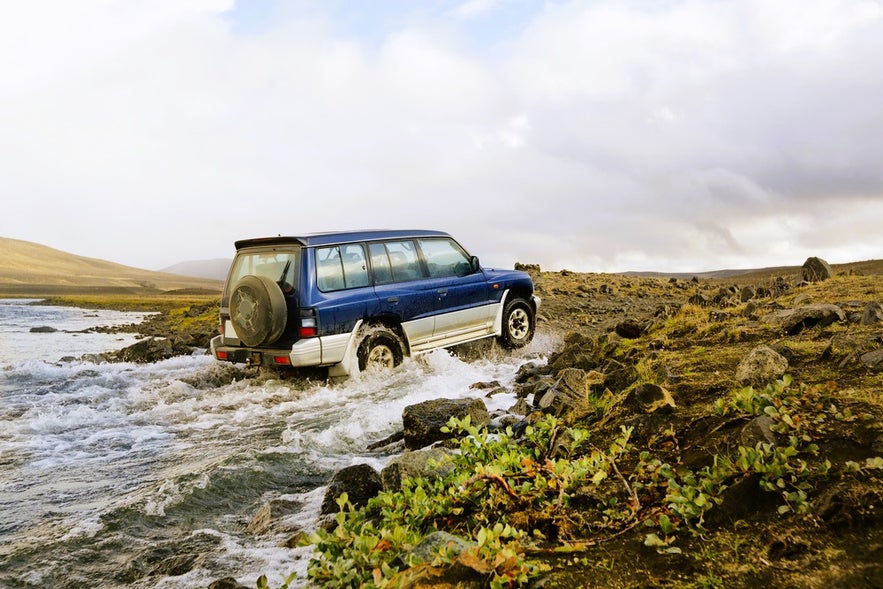 Before starting your road trip, take time to understand what your rental insurance actually covers. This can help you avoid unexpected costs if something goes wrong during your journey.
Before starting your road trip, take time to understand what your rental insurance actually covers. This can help you avoid unexpected costs if something goes wrong during your journey.
Standard insurance usually doesn’t cover all types of damage. Ask about optional add-ons like gravel protection, sand and ash coverage, and windshield or tire insurance. These are especially useful in windy areas, where volcanic ash or loose stones can easily damage the car.
Also, review your rental company’s river crossing policy. Some allow crossings only with Highland-rated 4x4 vehicles, while others prohibit them completely. Crossing without permission can void your insurance. If your August plans include Highland areas like Landmannalaugar or Askja, confirm these rules before your trip.
- Discover the Top Reykjavik Car Rentals and the Top Car Rental Companies in Iceland
- Check out the Best Guide to Rental Car Sizes in Iceland
- Learn more about Car Rentals and Road Information in Iceland
Driving Rules and Road Safety in Iceland
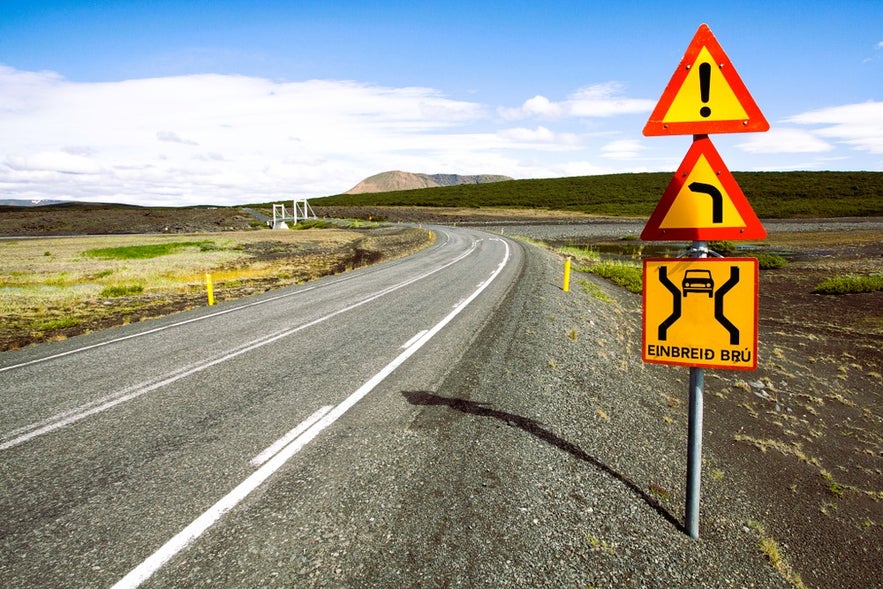 Knowing the road rules in Iceland is essential for a safe and stress-free trip. Even in August, when weather and driving conditions are generally favorable, visitors must follow local laws and stay alert on the road. The tips below highlight key rules and common safety practices for first-time drivers in Iceland.
Knowing the road rules in Iceland is essential for a safe and stress-free trip. Even in August, when weather and driving conditions are generally favorable, visitors must follow local laws and stay alert on the road. The tips below highlight key rules and common safety practices for first-time drivers in Iceland.
-
Seat belts and child seats: Everyone must wear a seat belt, and children must be secured in age-appropriate car seats. Most rental companies offer child seats if booked in advance.
-
Off-road driving is illegal: Driving off marked roads or tracks is strictly prohibited. It damages fragile landscapes and can result in high fines. Always stay on marked routes.
-
Speed limits vary by road type: In towns, the speed limit is usually 50 km/h (30 mph). On gravel roads, it’s 80 km/h (50 mph), and on paved rural roads, the limit is 90 km/h (55 mph). Always watch for road signs, as limits may change in specific areas.
-
Headlights must always be on: No matter the time of day or weather, headlights are legally required any time the car is running.
-
Wind and weather hazards: Even in August, strong gusts can damage car doors or affect driving. Always hold the door firmly when opening it. Check forecasts at vedur.is and road condition on road.is before setting out.
-
Fuel and payment: Most gas stations are self-service and operate 24/7, and you’ll need a credit card with a PIN for payments. In remote regions, fuel stations can be far apart, so refill whenever you get the chance.
-
One-lane bridges and roundabouts: Yield to oncoming traffic at one-lane bridges and to cars already inside a roundabout. One-lane bridges are common in Iceland. Always approach slowly and watch for signs.
-
Gravel kickback and windshield damage: Many rural roads in Iceland are gravel, even on popular routes. Loose stones can fly up from your tires or from passing cars, potentially cracking your windshield or damaging your paint. Keep a safe distance from other vehicles, especially on gravel roads.
-
River crossings on F-roads: Some F-roads involve crossing rivers with no bridges. These crossings are only safe for specific 4x4 vehicles and should never be attempted in a regular car. Never drive into a river without checking the depth and current, and watch for warnings on safetravel.is.
-
Emergency contact numbers: Call 112 for police, fire, or medical emergencies. This number works anywhere in Iceland. If you’ve registered your trip with safetravel.is, local services may be able to locate you more easily.
What To Pack for a Summer Road Trip in Iceland
Packing smart is key to having a smooth and comfortable driving experience in Iceland, especially in August. The weather can shift quickly, and services can be limited in remote areas. This list breaks down what you need to bring for your summer road trip.
-
Driver’s license: Bring your valid license. If it’s not in Latin characters, you may also need an international driving permit.
-
Rental confirmation: Keep a digital or printed copy of your rental agreement and pick-up details.
-
Credit card and insurance info: Most car rental companies require a credit card for booking and deposits, so bring one that works internationally. Also, bring proof of insurance, whether from the rental company or your own provider.
-
Waterproof outerwear and boots: Rain is common, even in August. A good rain jacket and waterproof shoes will keep you dry.
-
Layers for changing conditions: The weather can change throughout the day. Pack warm base layers, a fleece, and a light jacket you can easily remove or add.
-
Sunglasses: Iceland’s low sun angle can cause glare, especially when driving.
-
Power bank and USB chargers: Make sure your phone and devices stay charged throughout the day.
-
Offline map app or paper map: Mobile signal may be weak in remote areas. Download maps ahead of time or carry a printed map.
-
First-aid kit, flashlight, snacks, and water: Keep basic supplies in your car in case of emergencies or delays.
- Check out our Ultimate Guide to What To Wear in Iceland
- Learn also about What To Pack for Iceland for All Seasons
Top‑Rated Self‑Drive Tours for August in Iceland
Booking a pre-planned self-drive tour is a great way to explore Iceland without the stress of organizing every detail. These top-rated packages are designed for summer travel and include rental cars, accommodations, and detailed day-by-day routes.
-
10‑Day Complete Ring Road With Snaefellsnes & Westfjords: This extensive tour covers the classic Ring Road plus off-the-beaten-path regions like the Snaefellsnes Peninsula and Westfjords.
-
7‑Day Ring Road Self‑Drive Tour: This summer favorite follows the entire Ring Road over 7 days and includes stops like the Golden Circle, South Coast waterfalls, Jokulsarlon Glacier Lagoon, Lake Myvatn, and Eastfjords.
-
6‑Day Self‑Drive Tour of South Iceland, Waterfalls, Glaciers, and Volcanoes: This compact tour offers highlights in South Iceland over six days, combining the Golden Circle, dramatic waterfalls, volcanoes, and Jokulsarlon Glacier Lagoon.
-
7‑Day South & West Coast and Golden Circle Self-Drive Tour: Explore waterfall-lined roads, black sand beaches, and the Golden Circle on this 7‑day itinerary. It blends South Coast beauty with coastal drives in West Iceland.
-
14‑Day Ring Road Self-Drive Including Westfjords & Snaefellsnes: A longer route that includes remote Westfjords and the rugged Snaefellsnes Peninsula. It’s slower paced and ideal for travelers seeking dramatic landscapes off the usual path.
- Check out the Top Road Trips in Iceland
Frequently Asked Questions About Driving in Iceland in August
If you're planning your first self-drive trip to Iceland in August, it's normal to have a lot of questions. This section answers the most common concerns about driving laws, road types, car rentals, and safety.
Can I drive in Iceland with a foreign license?
Yes. Most visitors can drive in Iceland with a valid foreign driver’s license. It must be printed in the Roman alphabet and include your name, photo, and the expiration date. If your license is not in Roman letters, you should bring an International Driving Permit (IDP) along with your original license.
What is the minimum age to rent and drive a car in Iceland?
To rent a car in Iceland, you usually need to be at least 20 years old for small or standard cars. If you want to rent a 4x4, SUV, campervan, or larger vehicle, you’ll likely need to be 23 or 25 years old, depending on the rental company. You also need to have had your driver’s license for at least one year.
Some companies may rent to younger drivers (as young as 18 or 19), but you’ll have fewer car options and may need to pay an extra young driver fee.
Are F-roads open in August?
Most F-roads in the Central Highlands are open in August, though opening dates depend on weather and conditions. Some roads may close temporarily after heavy rain or flooding. Always check road.is before heading out.
Do I need to rent a 4x4 vehicle?
A 4x4 vehicle is mainly necessary if you plan to drive on F-roads or explore mountain regions. For popular paved routes like the Ring Road, Golden Circle, or South Coast, a 2WD car is suitable.
Can I drive the entire Ring Road in a week?
Yes. The full Ring Road can be driven in one week during August. Road conditions are good, and there is plenty of daylight. However, with just seven days, you will need to limit how much time you spend at each stop. For a more relaxed pace with time to enjoy attractions along the way, 10 to 14 days is ideal.
Is driving in Iceland safe for solo travelers?
Yes. Iceland is one of the safest countries in the world, and solo travel is common. Roads are clearly marked, and drivers are respectful. Just remember to check daily weather and road updates, especially if driving in remote areas.
What type of car insurance do I need?
Most rental cars include basic Collision Damage Waiver (CDW). Many travelers also add gravel protection and sand or ash coverage. These extras are helpful in summer, especially on gravel or windy routes.
Do I need to pre-book my rental car and accommodations in August?
Yes. August is one of the busiest travel months in Iceland, and availability is limited. To secure the best options and prices, it’s recommended to book your accommodations and car rentals at least two to three months in advance.
Can I use Google Maps, or do I need an offline app?
Google Maps works well across most of Iceland, but cell service may be weak in the Highlands or remote regions. It’s a good idea to download offline maps or bring a GPS device.
Are parking and toll roads a concern?
Most parking outside of cities is free. In Reykjavik and Akureyri, street parking usually requires payment during business hours. Iceland has only one toll road, the Vadlaheidi Tunnel near Akureyri, and payment must be made online within 24 hours.
Can I camp anywhere while on a road trip?
No. Wild camping is not allowed in many areas. If you will rent campervans, you must use official campgrounds, which are widely available and include facilities like showers, toilets, and electricity.
What is the speed limit in Iceland?
Speed limits in Iceland depend on the type of road. On paved rural highways, the limit is 90 kilometers per hour (55 miles per hour). On gravel roads, the limit is 80 kilometers per hour (50 miles per hour). In towns and cities, it is 50 kilometers per hour (30 miles per hour).
Speed cameras are common, and fines for speeding are high, so it’s important to drive within the posted limits.
Make the Most of Your August Drive Through Iceland
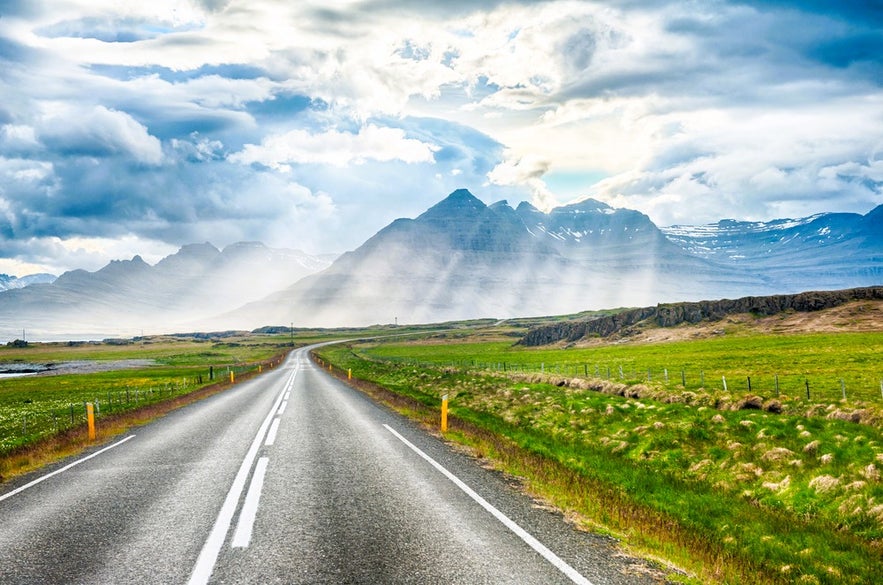 Planning a road trip in Iceland takes some preparation, but the experience is incredibly rewarding. With mild weather, long daylight hours, and access to both popular sights and remote regions, driving in Iceland in August gives you the freedom to explore at your own pace.
Planning a road trip in Iceland takes some preparation, but the experience is incredibly rewarding. With mild weather, long daylight hours, and access to both popular sights and remote regions, driving in Iceland in August gives you the freedom to explore at your own pace.
Before you hit the road, make sure you understand the different road types, choose the right vehicle, and check weather and road updates regularly. A well-packed car, a reliable map, and a flexible plan can make the difference between a stressful drive and a smooth adventure.
Are you planning a summer drive through Iceland? Let us know what you're most excited about in the comments.


